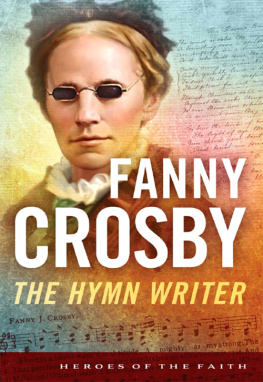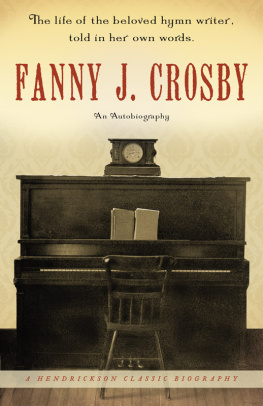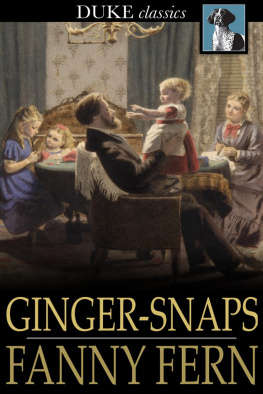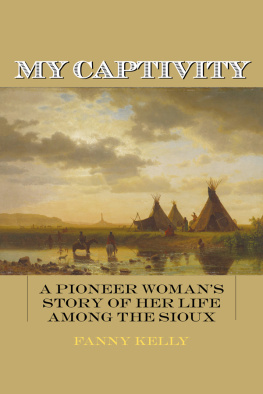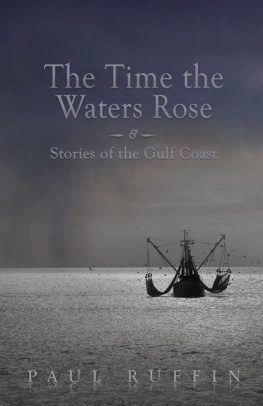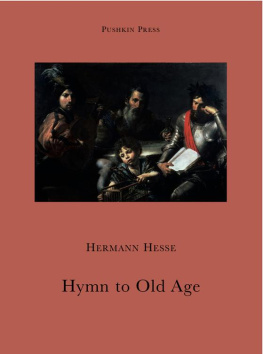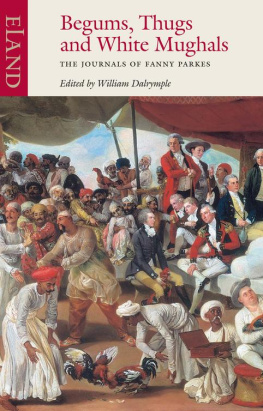Bernard Ruffin - Fanny Crosby: The Hymn Writer
Here you can read online Bernard Ruffin - Fanny Crosby: The Hymn Writer full text of the book (entire story) in english for free. Download pdf and epub, get meaning, cover and reviews about this ebook. year: 1976, publisher: Barbour Publishing, Inc., genre: Science. Description of the work, (preface) as well as reviews are available. Best literature library LitArk.com created for fans of good reading and offers a wide selection of genres:
Romance novel
Science fiction
Adventure
Detective
Science
History
Home and family
Prose
Art
Politics
Computer
Non-fiction
Religion
Business
Children
Humor
Choose a favorite category and find really read worthwhile books. Enjoy immersion in the world of imagination, feel the emotions of the characters or learn something new for yourself, make an fascinating discovery.
- Book:Fanny Crosby: The Hymn Writer
- Author:
- Publisher:Barbour Publishing, Inc.
- Genre:
- Year:1976
- Rating:4 / 5
- Favourites:Add to favourites
- Your mark:
- 80
- 1
- 2
- 3
- 4
- 5
Fanny Crosby: The Hymn Writer: summary, description and annotation
We offer to read an annotation, description, summary or preface (depends on what the author of the book "Fanny Crosby: The Hymn Writer" wrote himself). If you haven't found the necessary information about the book — write in the comments, we will try to find it.
Fanny Crosby: The Hymn Writer — read online for free the complete book (whole text) full work
Below is the text of the book, divided by pages. System saving the place of the last page read, allows you to conveniently read the book "Fanny Crosby: The Hymn Writer" online for free, without having to search again every time where you left off. Put a bookmark, and you can go to the page where you finished reading at any time.
Font size:
Interval:
Bookmark:


1976 by the Pilgrim Press
Print ISBN 978-1-62416-125-4
eBook Editions:
Adobe Digital Edition (.epub) 978-1-62416-427-9
Kindle and MobiPocket Edition (.prc) 978-1-62416-426-2
All rights reserved. No part of this publication may be reproduced or transmitted for commercial purposes, except for brief quotations in printed reviews, without written permission of the publisher.
Churches and other noncommercial interests may reproduce portions of this book without the express written permission of Barbour Publishing, provided that the text does not exceed 500 words and that the text is not material quoted from another publisher. When reproducing text from this book, include the following credit line: From Fanny Crosby, published by Barbour Publishing, Inc. Used by permission.
All scripture quotations, unless otherwise noted, are taken from the King James Version of the Bible.
Cover illustration: Greg Copeland
Cover design: Kirk DouPonce
Published by Barbour Publishing, Inc., P.O. Box 719, Uhrichsville, Ohio 44683, www.barbourbooks.com
Our mission is to publish and distribute inspirational products offering exceptional value and biblical encouragement to the masses.

Printed in the United States of America.
ALMOST A SAINT
The year is 1910. The place is Perth Amboy, New Jersey. A cab driver stops his horses to pick up two passengers: a middle-aged clergyman and a withered old woman, apparently blind, ravaged, and wasted almost beyond belief, bent nearly double with age. But as the coach jolts along to the railroad depot, the hackman becomes aware of something unusual about this ancient woman. She speaks to the clergyman in a voice not dry and quavering, but clear and high, mellow and young. Far from senile, the ladys mind is as fresh and young as her voice. She evidently is a woman of great intellect and refinement. She and the clergyman are discussing some point of theology. The coachman, paying more attention to what she is saying than to the road, listens intently to the wit and wisdom of the elderly lady.
This is Fanny Crosby, the hymn writer, the minister informs him.
The hackman is stunned. He takes off his hat and weeps openly. At the depot, he hails a policeman. This is Miss Fanny Crosby, who wrote Safe in the Arms of Jesus. I want you to help this young man get her safely to the train.
The policeman, too, is stunned. I sure will! Falteringly, he adds to the woman, We sang your hymn Safe in the Arms of Jesus last week, at my little girls funeral.
He looks at the ground with reddened, shining eyes. Aunt Fanny takes his enormous arm in her skinny hands and says, with great feeling and tenderness, My boy, I call all policemen and railroad men my boys; they take such good care of me wherever I go. God bless your dear heart! You shall have my prayers. And tell your dear wife that your dear little girl is safe in the arms of Jesus.
The constable weeps openly.
Who was Fanny Crosby, this strange little woman dressed in the style of seventy years before, with the green glasses and the crucifix on her breast? Who was this blind woman whose name was so revered by people on the street?
Today, she often is remembered as the author of mawkish Victorian hymns, trite and hackneyed. Among many liberal-minded clergy, her name is a byword for bad church music and bad theology; she seems to them to have been a neurotic woman of syrupy literary bent.
And thats if shes remembered at all. For most people, the name Fanny Crosby conjures up an absolute blank.
Was she indeed simply a third-rate hack poet whose fame justly faded generations ago? Or was she more than we realize today, someone whose life story is worth retelling? Did she make a significant contribution to American society, or was she overrated in her day?
How different was the place of Fanny Crosby in the estimation of our forebears! Far from being the epitome of a bad hymn writer, Fanny Crosby in her day was considered the greatest in America. Johann Strauss reigned as the waltz king in Vienna and John Philip Sousa the march king in Washington; Fanny Crosby reigned as the hymn queen in New York during the latter nineteenth and early twentieth centuries. Charles H. Gabriel (18561932), himself a noted hymn writer and author of several popular songs, at her death lamented the loss of the woman whose name, suspended as a halo above modern hymnologywill live on as long as people sing the Gospel. William Alfred Quayle (18601925), a Methodist bishop, poet, and theologian, called her the modern Saint Cecelia. George Coles Stebbins (18461945), a prominent hymn writer and evangelical singer, attributed all his success as a hymn tune composer to the poetry of the men and women who supplied him with verse, especially to his beloved Aunt Fanny. He wrote in 1905, The most distinguishing thing about my life has been my friends, Fanny Crosby, and Moody and Sankey.They have made me what I am.
FANNY CROSBY REIGNED AS THE HYMN QUEEN DURING THE LATTER NINETEENTH AND EARLY TWENTIETH CENTURIES.
In his 1924 autobiography, Stebbins wrote, There was probably no writer in her day who appealed more to the valid experience of the Christian life or who expressed more sympathetically the deep longings of the human heart than Fanny Crosby. In 1904, the well-known singing evangelist, Ira D. Sankey, partner and colleague of D. L. Moody, said the success of their evangelical campaigns resulted largely from Fanny Crosbys hymns.
During the era (18701920) of the gospel song, a light, informal hymn written in the style of the popular ballad, Fanny Crosby reigned supreme. Her hymns were sung all over the world. During an evangelical campaign in the British Isles, Sankey took a short vacation to the Swiss Alps, where he was astounded to hear peasants singing, beneath the window of his inn, Fanny Crosbys Pass Me Not, O Gentle Saviour in German. That hymn was said to have been a favorite of Queen Victoria and the Prince and Princess of Wales. Safe in the Arms of Jesus was played by a brass band at the funeral of President Grant in 1885 and, the same year, was sung at the funeral of Lord Shaftsbury, a founder of the YMCA. During the early 1900s, an American clergyman traveling through the Arabian desert was amazed to hear Bedouins in their tents singing Saved by Grace, presumably in Arabic.
But Fanny was known for more than her hymns. She was one of the three most prominent figures in American evangelical religious life in the last quarter of the nineteenth century (Moody and Sankey were the others). She was famous as a preacher and lecturer and was a devoted home-mission worker. Many times when she spoke at a church, people would be lined up for at least a block before the service began. She was venerated as practically a living saint in her later years; in fact, she was called the Protestant saint or the Methodist saint. When she was at home, she was a virtual prisoner of the confessional for the scores of people who came from all over the world to seek her advice and prayers.
SHE WAS CALLED THE PROTESTANT SAINT.
In her ninety-five years, Fanny Crosby wrote approximately nine thousand hymnsmore than anyone else in recorded Christian historyand more than a thousand secular poems. She was noted for her concerts on harp and organ. To our grandparents and great-grandparents, she was revered.
Font size:
Interval:
Bookmark:
Similar books «Fanny Crosby: The Hymn Writer»
Look at similar books to Fanny Crosby: The Hymn Writer. We have selected literature similar in name and meaning in the hope of providing readers with more options to find new, interesting, not yet read works.
Discussion, reviews of the book Fanny Crosby: The Hymn Writer and just readers' own opinions. Leave your comments, write what you think about the work, its meaning or the main characters. Specify what exactly you liked and what you didn't like, and why you think so.

